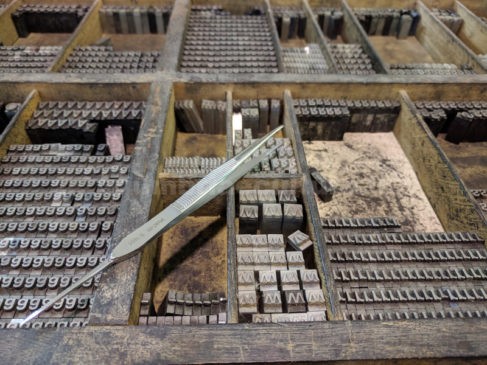The “Silvio Pellico” old typography is a “gem” within the several cultural sites to to be discovered in Montefiascone.
Montefiascone has a respectable role in the cultural offer of Tuscia: Bolsena Lake, the first volcanic lake in Europe, whose water is drinkable, the fortress of the Popes with its ancient and prestigious history, the cathedral of S. Margherita with its dome (the third largest in Italy), the museum dedicated to the work of Giuliano da Sangallo, who was one of the best architects during the Renaissance, and the basilica of San Flaviano, just to mention the major attractions.
The Silvio Pellico typography is the oldest known artisan typography still in use, because it originates from the ancient typography of the Seminary of Montefiascone, established in 1695 by Cardinal Barbarigo. Originally founded to print the books for internal use, then it expanded the production realizing volumes for the outside up to become, in 1852, the Silvio Pellico typography.
The Montefiascone seminar played an extremely important role for culture, a role that, centuries later, still mantains, even if with different characteristics: in 1700 – 1800 the seminary was the place of high level education both for those who would have chosen the ecclesiastical career, and for those of noble lineage who had to provide adequate education; nowadays the seminar is managed by a congregation that brings religious to Montefiascone from all over the world.
Entering the Silvio Pellico old typography, we make a leap back to 1450: the mobile letters invented by Gutemberg, whose technique remained almost unchanged until the last century, are still visible, after hundreds of years, in the chests of drawers divided into small compartments, to keep separate letters and punctuation in different fonts and different size. It’s a world of gestures and knowledge that survive until today: from the meticulous composition of the individual pages, letter by letter, spacing by spacing, inking, pressing and drying, repetitive and ever new gestures of a work that allowed the easy transmission of culture over the centuries.
The first significant technological innovation came with the Linotype, in 1800, visible in the museum, which allowed to compose an entire line of text in a single block, while maintaining the printing technique almost unchanged.
At the end of the old millennium the technological revolution of the four-color offset printing took place, overlapping colors on the sheets using an aluminum plates.
The visit to the Silvio Pellico Didactic Laboratory Exhibition is a suggestive journey through history, craftsmanship and technology, a symbolic example of how printing has evolved through time and what skills are needed to make a book, an apparently obvious object that it retains its charm despite the spread of digital instruments, and which we normally browse without asking who and what is behind its creation.
From the Pellegrino Tower in Montefiascone, in the sunny days, the view reaches the sea, gathering Lazio and Tuscany in an embrace, a generous and splendid territory waiting to be discovered and loved.
Benedetta Tintillini
Find Montefiascone on Google Maps:



